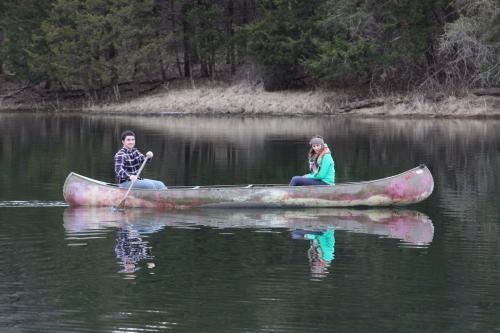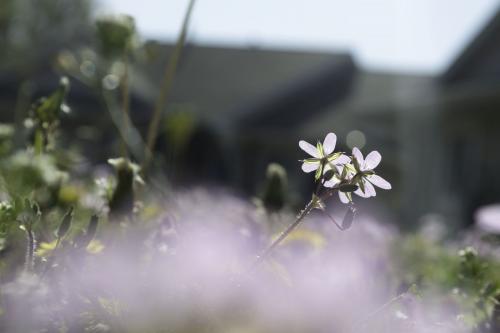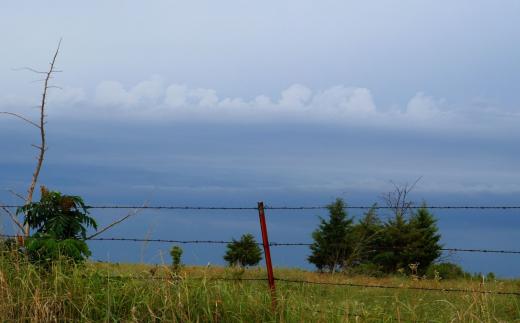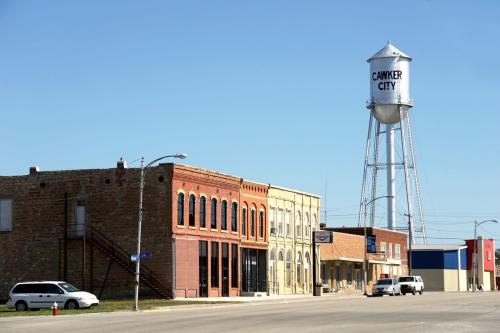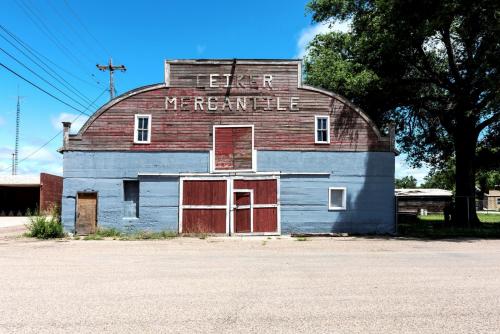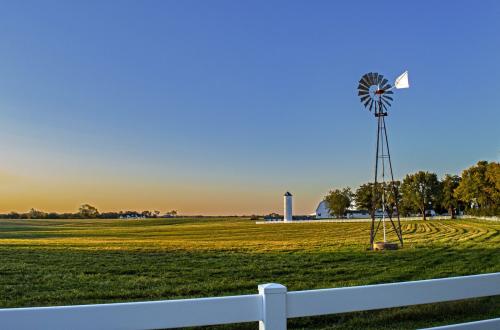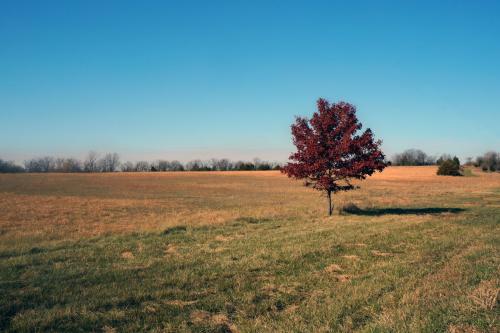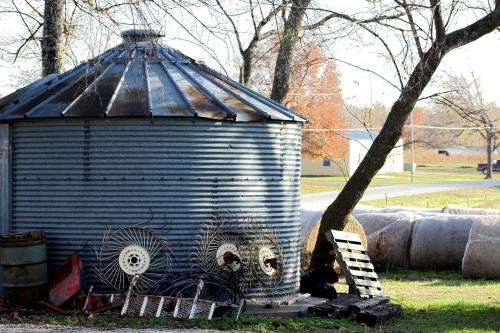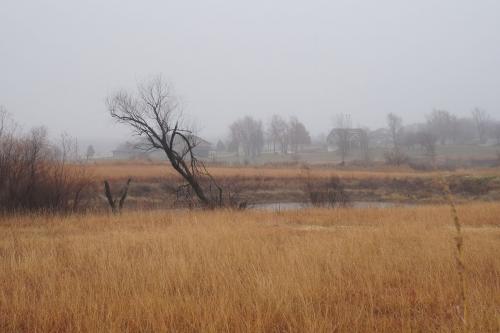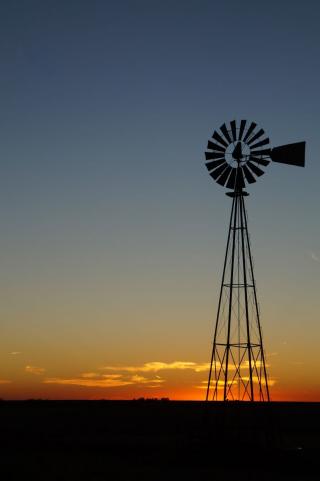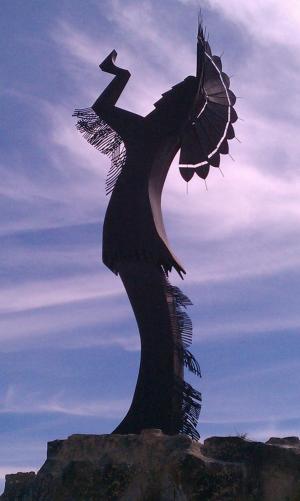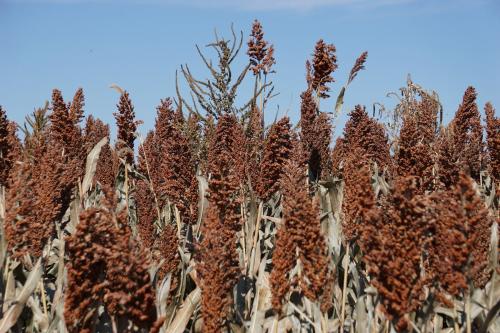Seasons in Kansas
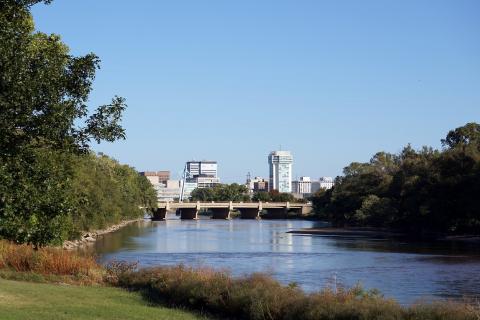
Kansas has nearly the same climate as the rest of the Midwest. However, in this predominantly flat state, it has several differences from the standard humid continental. Summers are very hot, and in winter very cold temperatures are sometimes possible, but in general there are no big frosts.
The west of the state has drier seasons than the east. The weather is characterized by sharp variability. Tornadoes are possible - this is what tourists love to photograph from afar.
Seasons
Contents:
Spring in Kansas
In late February and early March, thaws in Kansas are quickly replaced by frosts. It can still snow in mid-March, so we recommend bringing warm clothes with you. The temperature gradually rises from 23 °F (-5 °C) to 35 °F (+2 °C). It gets warmer in April, but it starts raining. When temperatures rise to 60-68 °F (+15 +20 °C) in May, thunderstorms come. Tornado season begins in the spring.
Kansas is one of the main agricultural states in the United States. In the spring, farmers are busy with planting, but people find time and opportunity to relax and have fun. Of particular interest is the Flint Hills Symphony Festival, which takes place every spring. You can walk around Fort Larned, which was built during the development of Kansas by the first colonists.
Climate of the Spring Months
| March Max average t°: 60 °F (+15.5 °C) Min average t°: 39 °F (+4 °C) Sundial in the day: 8 hours Rainy days: 6 days Precipitation: 2.9" (74 mm) |
| April Max average t°: 70 °F (+21 °C) Min average t°: 49 °F (+9.5 °C) Sundial in the day: 9 hours Rainy days: 7 days Precipitation: 3.8" (96 mm) |
| May Max average t°: 78 °F (+25 °C) Min average t°: 59 °F (+15 °C) Sundial in the day: 9.5 hours Rainy days: 8 days Precipitation: 5.8" (148 mm) |
(Wichita)
Spring Holidays
March 1st: National Women of Color Day.
March 17: St.Patrick 's Day.
April 1: April Fools' Day.
April 22: International Earth Day.
2nd Sunday of May: Mother’s Day.
last Monday in May: Memorial Day.
Summer in Kansas
Summer in Kansas is very hot, according to the locals. The hottest heat begins in August. In June and July, temperatures rise to 80-83 °F (+26 +28 °C). In August there are more than 90 °F (+32 °C). South winds often blow in the state, but they do not bring coolness. When it's hot, it seems. That summer lasts forever
In the heat, it is worth taking shelter in the shade of trees. Visit the Tolgrass Prairie National Wildlife Refuge and walk or cycle along the Santa Fe National Trail. Check out Boot Hill Museum & Front Street. This is a museum in Dodge City. It also houses the Carnegie Art Gallery and the Kansas Cosmosphere and Space Center.
Climate of the Summer Months
| June Max average t°: 86 °F (+30 °C) Min average t°: 68 °F (+20 °C) Sundial in the day: 11 hours Rainy days: 8 days Precipitation: 4.6" (118 mm) |
| July Max average t°: 91 °F (+33 °C) Min average t°: 73 °F (+23 °C) Sundial in the day: 12 hours Rainy days: 7 days Precipitation: 3.5" (88 mm) |
| August Max average t°: 90 °F (+32 °C) Min average t°: 72 °F (+22 °C) Sundial in the day: 11 hours Rainy days: 6 days Precipitation: 3.5" (88 mm) |
(Wichita)
Summer Holidays
June 14: Day of the American flag.
June 19: Juneteenth National Independence Day.
Third Sunday of June: Father’s Day.
July 4: Independence Day.
August 26: Women's Equality Day.
Autumn in Kansas
Autumn comes slowly to Kansas. The trees have already changed the color of their leaves from green to yellow and red, and it is still hot outside. Temperatures are almost summer in September, around 70 °F (+21 °C). Autumn coolness comes only in October. It is getting rainy, the temperature is dropping and in November the first frost is possible from 32 °F (0 °C) to 40 °F (+4 °C).
Kansas has excellent bird hunting conditions. It is called the Sunflower State. There is a lot of different game here: turkeys, deer, elk. The beginning of autumn is warm and dry and is a great time for hiking, relaxing in national parks and exploring historical sites. Families with children should visit the Kansas City Planetarium or the Wichita Zoo.
Climate of the Autumn Months
| September Max average t°: 82 °F (+30 °C) Min average t°: 64 °F (+18 °C) Sundial in the day: 9.5 hours Rainy days: 5 days Precipitation: 3.2" (82 mm) |
| October Max average t°: 70 °F (+21 °C) Min average t°: 52 °F (+11 °C) Sundial in the day: 8 hours Rainy days: 5 days Precipitation: 3.0" (77 mm) |
| November Max average t°: 58 °F (+14 °C) Min average t°: 40 °F (+4.5 °C) Sundial in the day: 7 hours Rainy days: 4 days Precipitation: 1.8" (46 mm) |
(Wichita)
Autumn Holidays
1st Monday in September: Labor Day.
2nd Monday in October: Columbus Day.
October 31: Halloween (All Hallows' Eve).
November 11: Veterans Day.
4th Thursday in November: Thanksgiving Day.
Winter in Kansas
Average winter temperatures in Kansas range from 14 °F (-10 °C) to 23 °F (-5 °C). The coldest month is mid-winter, January. Sometimes there are frosts down to -21 °F (-6 °C). In February, thaws are already possible, but we must remember that the frost will certainly return. Snow cover forms only towards the end of December. There are snow storms in the northern part of the state.
Christmas festivals are held in Kansas cities every winter. Frozen waterfalls on the rivers represent a mesmerizing sight.
Climate of the Winter Months
| December Max average t°: 45 °F (+7 °C) Min average t°: 29 °F (-2 °C) Sundial in the day: 6 hours Rainy days: 4 days Precipitation: 1.5" (39 mm) |
| January Max average t°: 45 °F (+7 °C) Min average t°: 27 °F (-3 °C) Sundial in the day: 6 hours Rainy days: 3 days Precipitation: 1.1" (28 mm) |
| February Max average t°: 49 °F ( +9 °C) Min average t°: 29 °F (-2 °C) Sundial in the day: 7 hours Rainy days: 4 days Precipitation: 1.6" (40 mm) |
(Wichita)
Winter Holidays
December 25: Christmas Day.
January 1: New Year’s Day.
3rd Monday in January: Birthday of Martin Luther King, Jr.
February 14: St. Valentine's Day.
3rd Monday in February: Presidents’ Day.
 Seasons of the Year
Seasons of the Year 